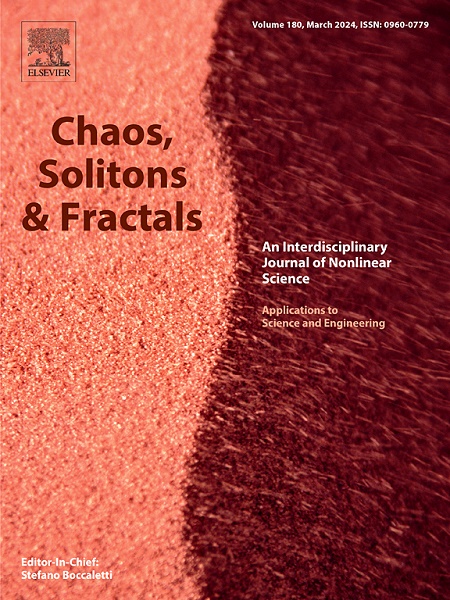A Decentralized Federated Learning model based on population mobility networks: A case study of the COVID-19 pandemic
IF 5.3
1区 数学
Q1 MATHEMATICS, INTERDISCIPLINARY APPLICATIONS
引用次数: 0
Abstract
This study proposes a Decentralized Federated Learning(DFL) framework based on population mobility networks to address the prediction challenges in multi-node dynamic systems. By incorporating an adjacency matrix constructed from population mobility networks, the framework ensures node independence while enabling dynamic information sharing and global collaborative optimization across nodes. Using the cumulative COVID-19 case predictions for 29 provinces, municipalities, and by using various provinces, autonomous regions, and municipalities in China as case studies, the performance of the column-randomized DFL model(CR-DFL) is systematically compared with that of the Isolated models(IS). Experimental results demonstrate that the CR-DFL model achieves significantly lower root mean square error (RMSE) than IS models in most nodes, with only three exceptions (Hebei, Tianjin, and Hubei) where the RMSE is slightly higher. Further analysis reveals that the CR-DFL model effectively captures complex dynamic relationships among nodes while accurately modeling global system dynamics. However, for certain nodes with unique dynamic characteristics, the prediction accuracy may be affected, indicating the need for further optimization to enhance robustness and adaptability. Additionally, this study explores potential directions for improvement, including optimizing communication efficiency, addressing data heterogeneity, and integrating multi-modal datasets.
求助全文
约1分钟内获得全文
求助全文
来源期刊

Chaos Solitons & Fractals
物理-数学跨学科应用
CiteScore
13.20
自引率
10.30%
发文量
1087
审稿时长
9 months
期刊介绍:
Chaos, Solitons & Fractals strives to establish itself as a premier journal in the interdisciplinary realm of Nonlinear Science, Non-equilibrium, and Complex Phenomena. It welcomes submissions covering a broad spectrum of topics within this field, including dynamics, non-equilibrium processes in physics, chemistry, and geophysics, complex matter and networks, mathematical models, computational biology, applications to quantum and mesoscopic phenomena, fluctuations and random processes, self-organization, and social phenomena.
 求助内容:
求助内容: 应助结果提醒方式:
应助结果提醒方式:


